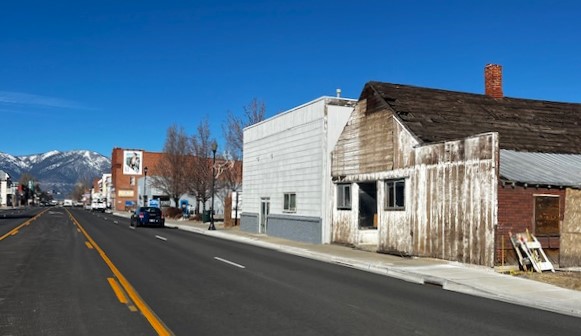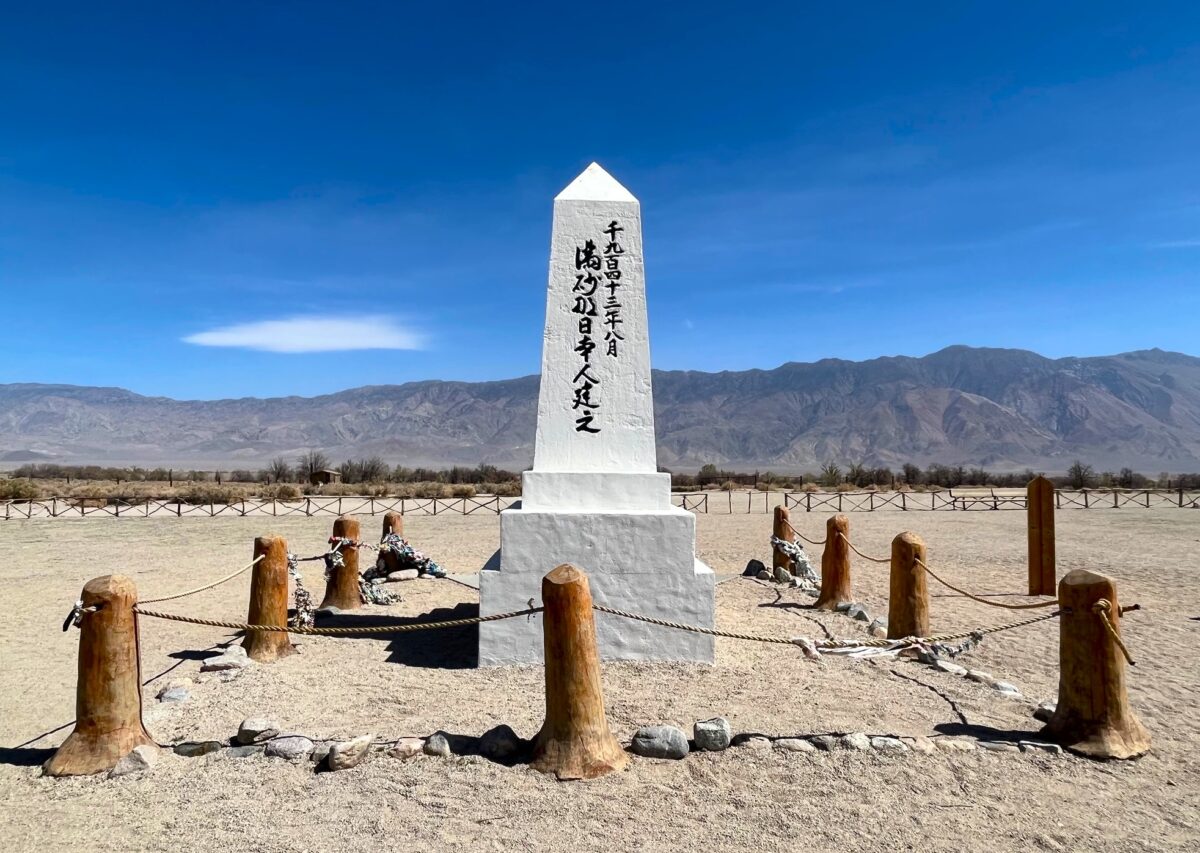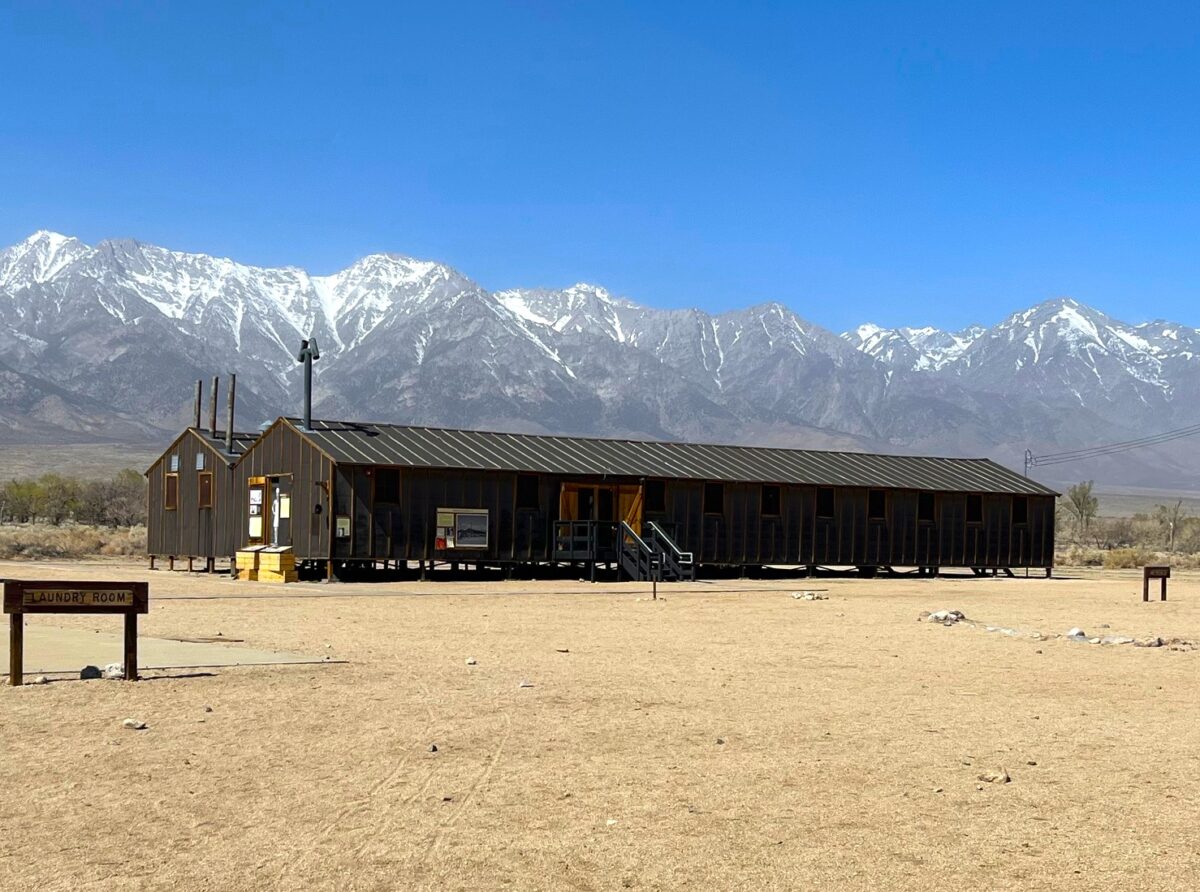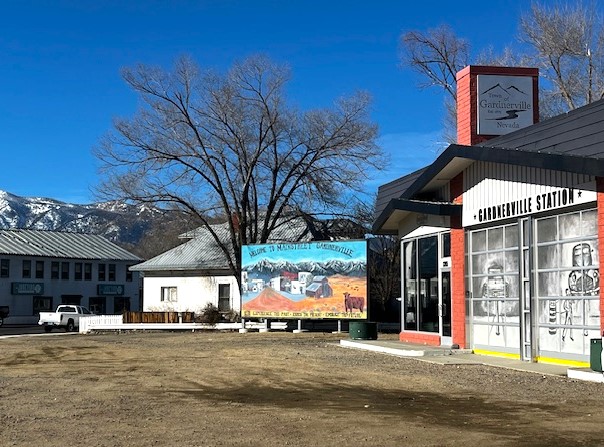Gardnerville laundry building linked to Japanese American heritage to be demolished

At the south end of Gardnerville rests a dilapidated brick and wood building with no signage.
Tucked between a storage garage and an old house, the building, just shy of 150 years old, is easy to miss. It abuts U.S. Highway 395 near Gardnerville’s notorious “S” curve, a tricky bend in the road that catches speeding drivers off guard. Hundreds of vehicles pass the nondescript building daily.
Known as the old Nishikida laundry, the building holds ties to the detainment of Japanese Americans during World War II and is one of the state’s rare properties associated with Nevada’s Japanese American heritage.
By the start of World War II, just 60 percent of American houses with electricity had washing machines (and many households still didn’t have electricity.) The chore of doing laundry was a laborious effort that businesses capitalized on; in the West, many laundries were operated by Asian families who did not otherwise have extensive employment opportunities because of discrimination.
Despite growing anti-Japanese sentiment during World War II, the Nishikida laundry continued operation, according to Preserve Nevada, a nonprofit preservation organization that named the building to its 2024 list of threatened and endangered places in the state.
But the blighted building is set to be demolished sometime this year.
It’s seen as an attractive nuisance, said Gardnerville Town Manager Erik Nilssen — a hazardous place potentially appealing to vandals or kids looking to explore. Any injury to someone on the site would be the property owner’s fault, even if people were trespassing.
“There is historic value to the building ... but it’s been uncared for so long, there’s nothing left to preserve,” he said.
After years of hunting for a way to remediate the site — it is plagued with lead and asbestos — the state is helping clean up the property through a federally funded program that targets polluted properties.
Once it’s torn down, a plaque will memorialize the old laundry and its ties to history.
This month marks the 83rd anniversary of the U.S. federal government issuing an executive order (citing national security) authorizing the removal of Japanese civilians from throughout California, Washington and Oregon — Feb. 19 is recognized as a day of remembrance. Forced to give up their jobs and houses, roughly 120,000 civilians of Japanese descent were sent to relocation and internment camps around the country. The remains of one of the camps, Manzanar, still stands as a national historic site a few hours south of Gardnerville on Highway 395, near the town of Independence, California.
By October 1942, eight months after the executive order to round up West Coast Japanese civilians, most were being held in 10 camps across the country. The camps forced families into shared military-style barracks. The structures had little privacy, and meals were served in large dining halls. Restrooms were public. Detainment lasted several years for most who were held at the camps.
Those of Japanese descent living in Nevada were not part of the federal relocation effort, although some Nevada residents faced prejudice and non-federally sanctioned roundups. The Nishikida family that operated the laundry business in south Gardnerville remained in town, and the business continued operating through the war and into the 1980s, when it finally shuttered. It has stood empty since.

Wartime hysteria in Nevada
There were few Japanese settlers in Nevada during the state’s earliest days, but in the early 1900s, Nevada’s Japanese population grew with the expansion of railroads and mining.
Japanese residents also took positions in farming and operating laundries — by the early 1900s, Japanese laundries were found in most Nevada towns, according to Andy Russell, a retired professor who has extensively studied and written about the history of Japanese Americans in Nevada, particularly during World War II.
Pushed out of California after the state passed laws disallowing Asian immigrants from owning land, Japanese farmers relocated to the Las Vegas area, where they became agricultural leaders — one family is estimated to have produced roughly half of the produce consumed in Las Vegas during the 1920s and early 1930s.
By the middle of World War II, there were fewer than 500 Nevada residents of Japanese origin, according to Russell. When Japan launched a surprise attack against the United States at Pearl Harbor on Dec. 7, 1941, Japanese residents living in the Western United States were immediately villainized, including those in Nevada.
In the days after the attack on Pearl Harbor, former Nevada Gov. Edward Carville called on residents to "keep calm and approach this emergency sensibly," while Miles N. Pike, the early U.S. attorney for wartime Nevada, urged residents to embrace immigrant families “as a matter of justice and out of duty to our country.”
Not all Nevadans responded as requested.
Many of Nevada’s residents of Japanese descent lived in White Pine County, where they worked at copper mines in Ruth and McGill. The county was one of the first in the state to experience wartime hysteria, Russell said.
When Japanese laborers showed up to work the day after the attack on Pearl Harbor, their co-workers demanded they be dismissed from their jobs and kept under watch by an armed guard. Later, some of the workers were removed to relocation camps as far away as North Dakota.
“The Japanese couldn’t apply to be U.S. citizens, so it was very easy to stick them in these internment camps,” Russell said. (Japanese immigrants were not allowed to apply for U.S. citizenship until 1952.) “It would be like if this incoming president goes around rounding up recent immigrants who have no status.”
Meredith Oda, associate professor of history at UNR, also draws a parallel between the fear mongering that led to Japanese detainment and what is happening today under President Donald Trump’s aggressive deportation plan.
“This is a clear parallel,” she said. “You have to make people into these dangerous aliens to justify what’s happening … You perpetuate [that] they are dangerous and that allows you to justify anything you want to do.”
Japanese immigrants across the state faced other prejudices, including mistrust from neighbors and law enforcement.
“Right after it (war) broke out, the sheriff came and took my father to jail, and they kept him there for about three months,” recalled Buddy Fujii during a UNR oral history project recorded in 1992. “I remember going to visit him in jail, and I couldn’t understand why he was in jail, because I knew he hadn’t done anything.”
Fujii remembers the FBI visiting his house every week, searching for hidden radios and weapons.
“We had the old Philco radio, like most families did, and that’s all we had. So, it wasn’t a two-way radio or anything,” he recalled. “However, my father had firearms, because he liked to hunt, so they took all his guns away, and that may have been one reason why they arrested him, but I guess they just thought he was a spy.”
In Carson City, Ida Fukui Weiss remembered being part of the only Japanese family in town. When the war struck, her family faced travel restrictions, and Caucasian friends had to sign vouchers for her family to travel to places such as Reno.


Former school and laundry now a ‘public nuisance’
Since the laundry’s closure, stories have circulated that it is polluted because of its business operations. The high levels of asbestos and lead found on-site, however, are simply due to the building’s age, according to David Friedman, supervisor of the Nevada Division of Environmental Protection’s Bureau of Corrective Actions Superfund Branch.
The building opened in 1876, 3 miles outside of town, as the East Fork School. In 1915, it was closed, then moved to its current location. In 1918, it was converted to a laundry. The Nishikida family purchased the business just as World War II was beginning.
That the business remained open through the war shows that the family was serving a community need that overrode anti-Asian sentiment, Oda said.
Dave Nishikida remembers going to the laundry as a young boy.
His grandmother owned the business and his parents worked there; with no day care, Dave’s parents would take him and his brother to work.
“We were put in playpens and got to run around the yard. Wind dried the sheets,” he recalled. “When we got older, we wanted to help. I probably folded more T-shirts and underwear than most people fold in their lifetime.”
But the building has stood empty since the business shuttered in 1989 and, after a vehicle crashed into the building in 2019, further creating a hazard at the site, the county issued a code violation to the building’s owners (still the Nishikida family).
“We asked for its removal because we believe it’s a public nuisance — an attractive nuisance is what it’s called — for vandalism or fires,” Nilssen said.
The building is in such a dilapidated state that the only way to remove the asbestos and lead at the site is to demolish the building, Friedman said. The county assisted the Nishikida family in applying for funding through the state’s brownfield program, which cleans up sites that are abandoned or underused due to actual or perceived contamination. The cleanup work is initiated with federal dollars provided through the Environmental Protection Agency; the laundry site’s remediation will cost about $200,000 by the time it’s completed.
“In a way it’s sad, but in a way it’s not,” Dave Nishikda said of the building’s demolition.
In 2013, a gas station just south of the laundry was donated to the Town of Gardnerville. Similar to the laundry, it required brownfield funding to clean up, and the building, known as Gardnerville Station, now serves as a rentable meeting hall.
